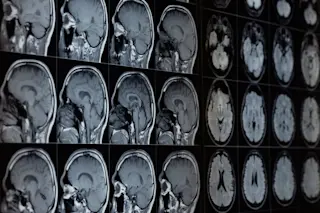
Cardiomyocytes damaged by a heart attack
What's the News: Scientists are devoting countless research hours to treatments based on embryonic stem cells
, differentiating these blank-slate cells from embryos into brain cells
, light-sensing retinal cells, blood cells, and more to replace damaged or destroyed tissues in the body. Now, a new study in mice shows such that nature has arrived at just such a solution
, too: When a pregnant mouse has a heart attack, her fetus donates some of its stem cells to help rebuild the damaged heart tissue. How the Heck:
The researchers started with two lines of mice: normal mice and mice genetically engineered to express green fluorescent protein (GFP), which glows a distinctive green when exposed to blue light, in their cells. They mated normal female mice with GFP-producing male mice. This meant that half the resulting fetuses had the GFP gene, too, making their cells glow, too. Twelve days later---a little less than two-thirds of the way through a normal mouse pregnancy---the researchers gave half the pregnant mice heart attacks.
When the scientists examined the female mice's heart tissue two weeks after the heart attacks, they found lots of glowing green tissue---cells that came from the fetus---in the mom's heart. Mice who had heart attacks had eight times as many cells from the fetus in their hearts as mice who hadn't had a heart attack did, meaning the high volume of fetal cells was a response to the heart attack.
What's more, the embryo's stem cells had differentiated into various types of heart tissue, including cardiomyocytes, the rhythmically contracting muscle cells that produce a heartbeat.
What's the Context:
Doctors have observed that women who experience weakness of the heart during pregnancy or shortly after giving birth have better recovery rates than any other group of heart failure patients. This study suggests that fetal stem cells may help human mothers, as well as mice, recover from heart damage. It may also explain another curious clinical observation: The hearts of two women who suffered from severe heart weakness were later found to contain cells derived from the cells of a male fetus years after they gave birth to their sons.
The same thing seems to hold true for other organs. When pregnant women have damage in other organs, including the brain, lung, and liver, earlier studies have shown, fetal cells show up there, too.
The Future Holds: Since fetal stem cells can be readily isolated from the placenta, the researchers point out, they could provide a plentiful source of stem cells for treating heart damage
. Reference: Rina J. Kara et al. "Fetal Cells Traffic to Injured Maternal Myocardium and Undergo Cardiac Differentiation."Circulation Research, published online November 14, 2011. DOI: 10.1161/CIRCRESAHA.111.249037
Image courtesy of KGH / Wikimedia Commons













